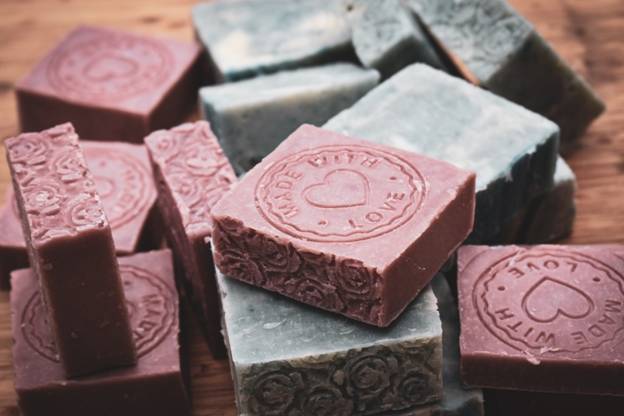Have you heard that the global soap market is going to be worth over $55 billion within the next few years?
While there are lots of big brands selling soap, tons of individuals have learned how fun it is to make soap. Not only is it a relaxing and creative hobby, but it can generate an astonishing amount of money.
Are you curious about learning how to make soap to sell? Your curiosity could turn into a booming business. Keep reading our guide that will outline the process of making soap to sell.
Research and Learn How to Make Soap
Before you can start a soap business, it’s essential to gather knowledge about the craft. Take the time to research different soap-making methods. This can include cold process, hot process, and melt and pour.
Each method has its own advantages and challenges. Understanding the basics of each will help you decide which one suits you best. By expanding your knowledge, you can create unique and high-quality products that stand out in the market.
You should also explore various soap recipes and ingredients to understand their properties and benefits. Learn about different types of oils, butters, and their effects on the final product. Discover various fragrances, colors, and additives to enhance the appeal of your soaps.
Safety First
Soap-making involves working with caustic substances, so you have to prioritize safety. Always wear protective gear like gloves, goggles, and an apron to shield yourself from any potential accidents. It’s important to work in a well-ventilated area to avoid inhaling fumes or gases.
You’ll also need to make sure your workspace is free from any distractions and keep children and pets away during the soap-making process. Familiarize yourself with the proper handling and storage of lye, a key ingredient in soap making, to prevent accidents.
Taking the necessary precautions will give you a safe and enjoyable soap-making experience.
Gather Soap Making Supplies
To start making soap, you’ll need a range of supplies. Begin by investing in a digital scale for accurate measurements. Proper measurement is essential to maintain consistency in your soap recipes.
You’ll also need the following things:
- Aheat-resistant container or pot for mixing ingredients
- A thermometer to monitor temperatures
- A stick blender for blending the soap batter
- Soap molds to shape your soaps
- A workspace protected with parchment paper for easy cleanup
- Oils, butters, lye, essential oils, colorants, and other additives
Consider purchasing high-quality ingredients to get the best possible outcome for your final product. Having a well-stocked inventory will allow you to experiment with different variations and cater to a wider range of customer preferences.
Formulate Your DIY Soap Recipe
Once you’ve gathered your supplies, it’s time to create your unique soap recipe. Soap making is a combination of science and art. Don’t be afraid to experiment and find your signature formula.
Begin by selecting a variety of oils and butters that will provide the desired properties in your soap. Popular choices include olive oil, coconut oil, palm oil, shea butter, and cocoa butter.
You can use a calculator for soaps to determine the exact amounts of oils, butters, lye, and water you’ll need based on your chosen oils and desired superfat percentage. Superfatting refers to leaving a percentage of oils unsaponified, which adds extra moisturizing properties to the soap. Adjust the super-fat percentage according to the properties you want your soap to have, such as increased lather or moisturizing benefits.
Measure and Mix
Accurate measurement is crucial in soap making to get a balanced and safe product. Weigh your oils and lye using a digital scale to achieve precise measurements. Remember to handle lye with caution and wear protective gear during the process.
Next, measure the water according to your recipe. Add your lye to the water while you stir continuously to dissolve it. It’s important to add the lye to the water and not the other way around to prevent an exothermic reaction. Your lye solution needs to cool to around 100°F before proceeding.
Combine and Blend
Once the lye solution has cooled and the oils are melted, it’s time to combine the two mixtures. You can add the lye solution to your melted oils and use a stick blender to mix them together. Blend until the mixture reaches a thick consistency known as a “trace.”
Trace is achieved when the soap batter leaves a visible trail or drizzle when poured back onto itself. The blending process may take several minutes. Be patient and keep blending until you reach the trace.
It’s important to note that the time required to reach trace may vary depending on the oils and ingredients used. By achieving trace, you ensure that the soap batter is well-emulsified and ready for the next steps.
Add Fragrance, Color, and Additives
Once you’ve reached trace, it’s time to add fragrance, color, and any desired additives to your soap. This is where your creativity comes into play. Consider using essential oil scents that are popular with a wide range of shoppers.
For color, you have a variety of options to choose from. Natural colorants such as clays, herbs, or plant-based powders can add visual interest to your soaps while maintaining their natural appeal. You can also use cosmetic-grade colorants to achieve vibrant hues.
If you want to add additional benefits to your soap, consider incorporating additives like oatmeal, activated charcoal, or dried botanicals. These can provide exfoliating, detoxifying, or soothing properties.
Pour, Cure, Package, and Market
Now it’s time to pour it into your chosen molds. Tap the molds on a countertop to remove any air bubbles. Let the soap rest for 24 to 48 hours to let it set.
After this initial curing period, carefully unmold the soap bars. Place the soap bars on a rack or tray in a cool, dry area with good airflow to cure further. This curing process typically takes 4 to 6 weeks, although this timeframe can vary depending on the recipe and environmental conditions.
Once your soap bars are cured, it’s time to package them for sale. Consider using Custom Printed Soap Boxes to gather the most attention. You can use online platforms, local markets, and social media to market and sell your soaps to a wider audience.
Now You Know How to Make Soap to Sell
Soap-making can be a fulfilling and profitable business venture. This guide on how to make soap to sell will get you on the right path.










